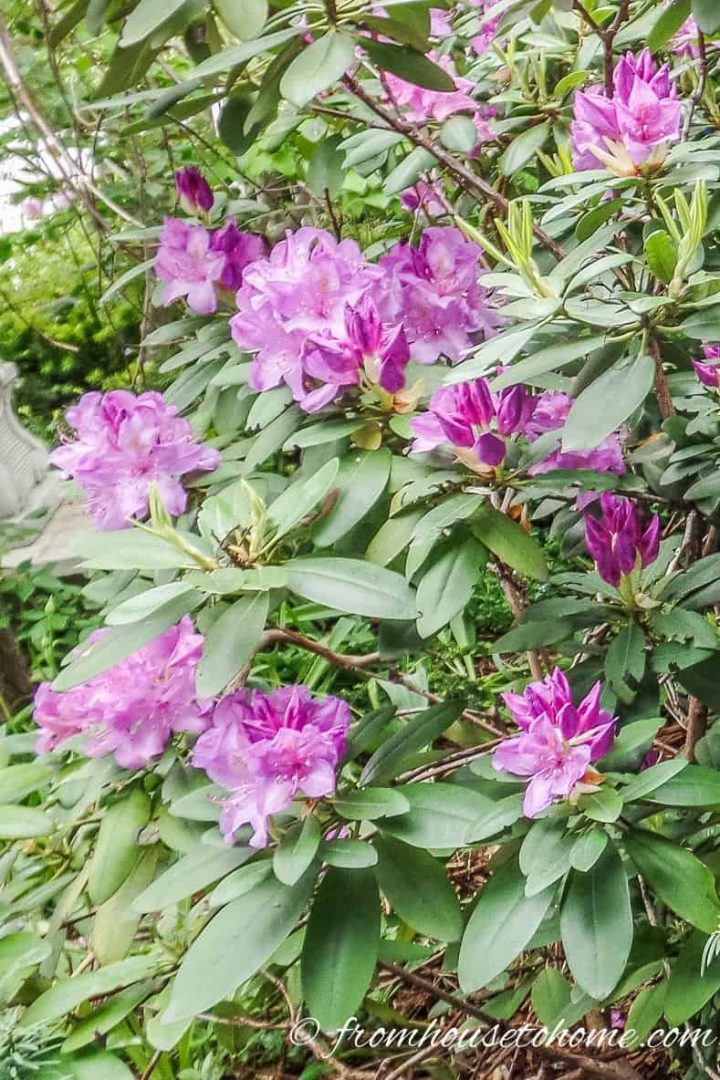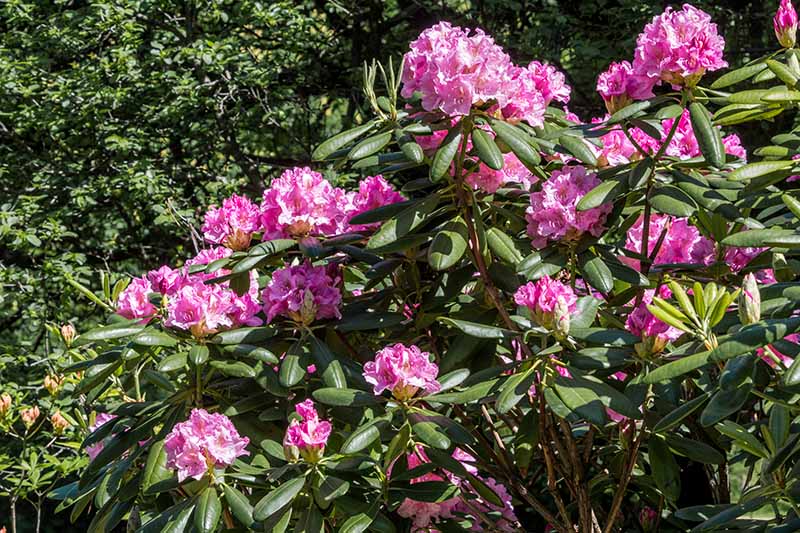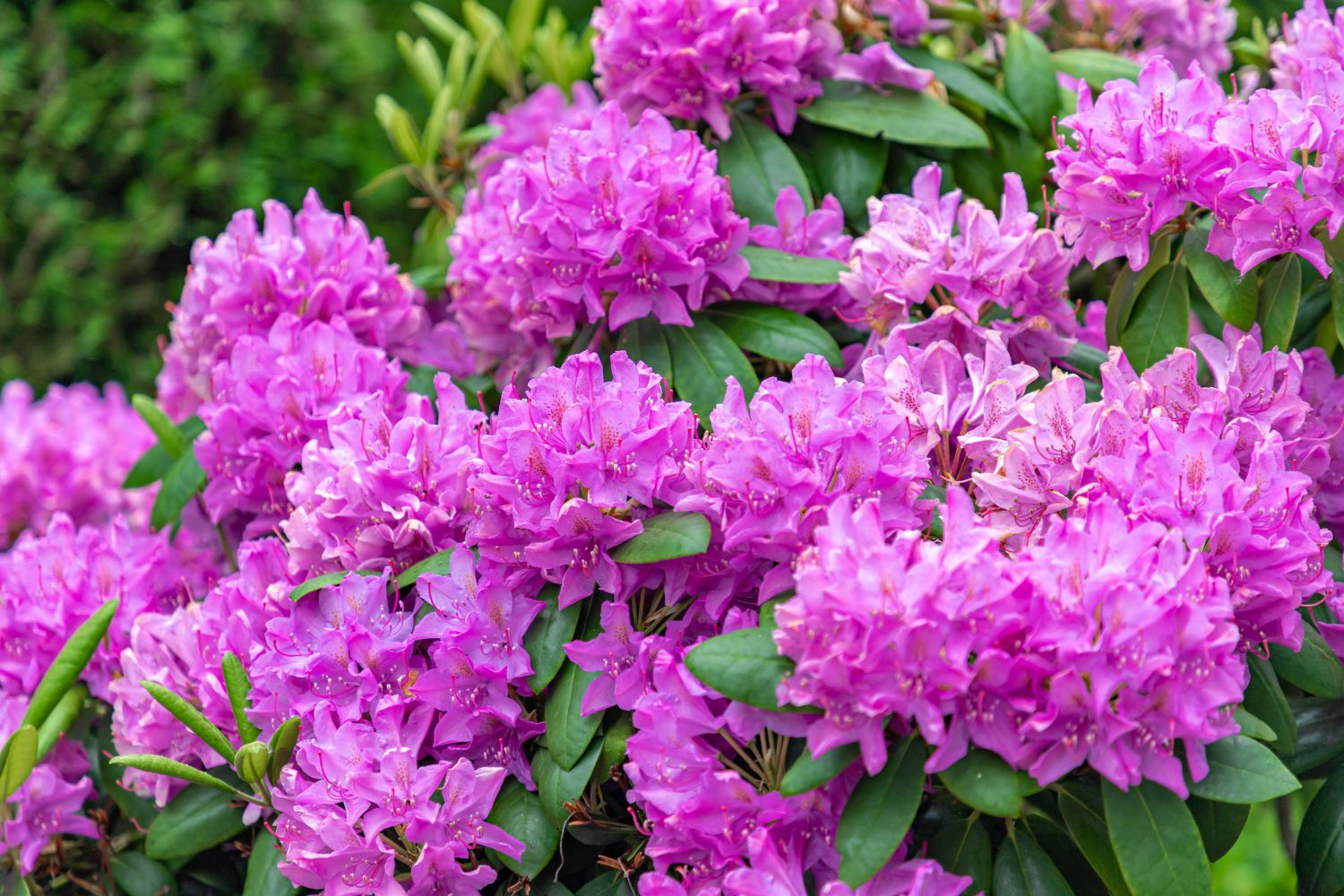Discovering the Right Conditions for Rhododendron Success
When it comes to growing rhododendrons, choosing the right location and soil conditions is crucial for their success. Rhododendrons are sensitive to extreme temperatures, so they thrive in areas with mild winters and cool, moist summers. The ideal climate for rhododendrons is in USDA zones 5-8, where the temperature ranges from 35°F to 75°F (2°C to 24°C). In addition to the right temperature, rhododendrons also require specific sunlight and soil conditions.
Rhododendrons prefer partial shade to full sun, depending on the variety. In general, they require at least 4-6 hours of direct sunlight per day. However, in warmer climates, it’s essential to provide some shade to prevent scorching of the leaves. When it comes to soil, rhododendrons are acid-loving plants that thrive in soils with a pH between 5.5 and 6.5. They also require well-draining soil that is rich in organic matter.
To create the perfect soil conditions for rhododendrons, it’s essential to test the pH level of your soil and amend it if necessary. Adding organic matter such as compost or peat moss can help lower the pH and improve soil structure. It’s also crucial to remove any weeds or debris that can compete with your rhododendrons for water and nutrients.
By providing the right location and soil conditions, you’ll be well on your way to growing healthy and thriving rhododendrons. Whether you’re looking to start a rhododendron from seed or plant a mature specimen, understanding the specific needs of these plants is essential for their success. With the right conditions, you can enjoy the beautiful blooms and foliage of rhododendrons for years to come.
For those looking to start a rhododendron, it’s essential to choose a location that meets the specific needs of these plants. By doing so, you’ll be able to enjoy the beauty and fragrance of rhododendrons in your garden. With proper care and attention, rhododendrons can thrive and provide a stunning display of color and beauty.
Preparing the Soil for Optimal Rhododendron Growth
Preparing the soil for rhododendron planting is a crucial step in ensuring the success of these beautiful flowers. Rhododendrons require acidic soil with a pH between 5.5 and 6.5 to thrive. If your soil is too alkaline, it can lead to nutrient deficiencies and poor growth.
To prepare the soil for rhododendron planting, start by testing the pH level of your soil. You can purchase a soil testing kit or send a sample to a laboratory for analysis. If your soil is too alkaline, you can add elemental sulfur or peat moss to lower the pH.
In addition to acidic soil, rhododendrons also require well-draining soil that is rich in organic matter. You can add compost or well-rotted manure to improve the soil structure and fertility. It’s also essential to remove any weeds or debris that can compete with your rhododendrons for water and nutrients.
When preparing the soil for rhododendron planting, it’s also important to consider the soil’s nutrient content. Rhododendrons require a balanced diet of nutrients to thrive, including nitrogen, phosphorus, and potassium. You can add a slow-release fertilizer to the soil to provide a steady supply of nutrients.
By preparing the soil properly, you can create an ideal environment for your rhododendrons to grow and thrive. Whether you’re starting a rhododendron from seed or planting a mature specimen, proper soil preparation is essential for success. With the right soil conditions, you can enjoy the beautiful blooms and foliage of rhododendrons for years to come.
When it comes to how to start a rhododendron, soil preparation is a critical step. By following these tips, you can create a healthy and thriving rhododendron that will provide beauty and joy for years to come.
Selecting the Perfect Rhododendron Variety for Your Garden
With over 1,000 species of rhododendrons to choose from, selecting the perfect variety for your garden can be a daunting task. However, by considering a few key factors, you can find the ideal rhododendron to suit your specific needs.
One of the most important factors to consider when selecting a rhododendron variety is its growth habit. Rhododendrons can range in size from compact, dwarf varieties to large, tree-like specimens. Consider the amount of space you have available in your garden and choose a variety that will fit comfortably in the area.
Another important factor to consider is the bloom time of the rhododendron. Rhododendrons can bloom at different times of the year, depending on the variety. If you want to enjoy blooms in the spring, choose a variety that blooms in late March or early April. If you prefer summer blooms, choose a variety that blooms in June or July.
In addition to growth habit and bloom time, you should also consider the color and fragrance of the rhododendron. Rhododendrons come in a wide range of colors, including pink, purple, white, and red. Some varieties also have fragrant flowers, which can add an extra layer of beauty to your garden.
Some popular rhododendron varieties for beginners include ‘PJM’, ‘Nova Zembla’, and ‘Lee’s Dark Purple’. These varieties are known for their compact growth habits, vibrant blooms, and ease of care.
When it comes to how to start a rhododendron, choosing the right variety is a critical step. By considering factors such as growth habit, bloom time, color, and fragrance, you can find the perfect rhododendron to suit your specific needs. With the right variety, you can enjoy the beauty and fragrance of rhododendrons in your garden for years to come.
Planting Rhododendrons: A Step-by-Step Guide
Planting rhododendrons can be a straightforward process if you follow the right steps. Here’s a step-by-step guide to help you plant your rhododendrons successfully.
Step 1: Prepare the Planting Site
Before planting your rhododendron, make sure the planting site is prepared. Remove any weeds or debris from the area and loosen the soil to a depth of about 12-18 inches. If your soil is heavy clay or sandy, mix in some organic matter like compost or well-rotted manure to improve its structure.
Step 2: Handle the Roots with Care
Rhododendron roots are sensitive, so handle them with care. Gently remove the plant from its container and inspect the roots. If the roots are circling or growing out of the container, gently tease them apart with your fingers or a blunt instrument.
Step 3: Plant at the Right Depth
Plant your rhododendron at the same depth as it was in the container. Make sure the root flare (where the stem flares out at the base of the plant) is level with the soil surface. If you’re planting a bare-root rhododendron, plant it so that the crown (where the stem meets the roots) is about 1-2 inches above the soil surface.
Step 4: Water Properly
Water your rhododendron thoroughly after planting. Make sure the soil is moist but not waterlogged. Keep the soil consistently moist during the first growing season, but avoid overwatering.
By following these steps, you can ensure that your rhododendron gets off to a healthy start. Remember to provide the right conditions, including acidic soil and partial shade, to help your rhododendron thrive.
When it comes to how to start a rhododendron, planting is a critical step. By following these steps, you can give your rhododendron the best chance of success and enjoy its beautiful blooms for years to come.
Caring for Your Rhododendrons: Tips for Watering, Fertilizing, and Pruning
Caring for your rhododendrons is crucial to ensure they thrive and produce beautiful blooms. Here are some tips on how to care for your rhododendrons, including watering, fertilizing, and pruning.
Watering: Rhododendrons need consistent moisture, especially during the first year after planting. Water them deeply once or twice a week, depending on weather conditions. Avoid overwatering, which can lead to root rot and other problems.
Fertilizing: Rhododendrons benefit from regular fertilization. Use an acidic fertilizer, such as one specifically formulated for azaleas and rhododendrons, and follow the instructions on the label. Fertilize in the spring and again in the summer, but avoid fertilizing in the fall, as this can promote new growth that may not have time to harden off before winter.
Pruning: Pruning is an essential part of rhododendron care. Prune your rhododendrons immediately after they finish blooming, removing any dead or damaged branches. Cut back tall branches to encourage bushy growth and promote more blooms. You can also prune your rhododendrons in the late winter or early spring, before new growth begins.
In addition to watering, fertilizing, and pruning, there are a few other things you can do to care for your rhododendrons. Mulch around the base of the plants to retain moisture and suppress weeds. Keep the area around your rhododendrons free of debris and dead leaves, which can harbor pests and diseases.
By following these tips, you can keep your rhododendrons healthy and thriving. Remember to also provide the right conditions, including acidic soil and partial shade, to help your rhododendrons succeed.
When it comes to how to start a rhododendron, caring for the plant is an ongoing process. By following these tips and providing the right conditions, you can enjoy beautiful blooms and a healthy, thriving plant for years to come.
Common Challenges and Solutions for Growing Rhododendrons
Despite their beauty and popularity, rhododendrons can be challenging to grow. Here are some common problems that may arise when growing rhododendrons, along with solutions and troubleshooting tips to help you overcome them.
Pests: Rhododendrons can be susceptible to pests such as spider mites, mealybugs, and scale. To control these pests, use insecticidal soap or neem oil, and make sure to inspect your plants regularly.
Diseases: Rhododendrons can be prone to diseases such as root rot, leaf spot, and powdery mildew. To prevent these diseases, make sure to provide good air circulation, water carefully, and avoid overfertilizing.
Nutrient Deficiencies: Rhododendrons require a balanced diet of nutrients to thrive. If your rhododendron is not receiving enough nutrients, it may exhibit symptoms such as yellowing leaves or stunted growth. To address nutrient deficiencies, use a balanced fertilizer and follow the instructions on the label.
Other Challenges: Rhododendrons can also be affected by other challenges such as extreme weather conditions, poor soil quality, and inadequate watering. To address these challenges, make sure to provide your rhododendron with the right conditions, including acidic soil, partial shade, and consistent moisture.
By being aware of these common challenges and taking steps to prevent them, you can help your rhododendron thrive and enjoy its beautiful blooms for years to come.
When it comes to how to start a rhododendron, being prepared for common challenges is essential. By following these tips and taking steps to prevent problems, you can ensure a healthy and thriving rhododendron that will provide beauty and joy for years to come.
Encouraging Blooming and Fruiting in Rhododendrons
Rhododendrons are known for their stunning flowers, but they can also produce fruit. To encourage blooming and fruiting in rhododendrons, it’s essential to provide the right conditions.
Light: Rhododendrons need sufficient light to produce flowers and fruit. However, they also require some shade, especially in warmer climates. Provide your rhododendron with partial shade, especially during the hottest part of the day.
Temperature: Rhododendrons prefer cooler temperatures, especially when it comes to blooming and fruiting. Avoid exposing your rhododendron to extreme temperatures, such as those above 75°F (24°C) or below 35°F (2°C).
Nutrient Availability: Rhododendrons require a balanced diet of nutrients to produce flowers and fruit. Use a fertilizer specifically formulated for rhododendrons, and follow the instructions on the label.
Watering: Consistent moisture is essential for blooming and fruiting in rhododendrons. Water your rhododendron regularly, but avoid overwatering, which can lead to root rot and other problems.
Pruning: Pruning is an essential part of encouraging blooming and fruiting in rhododendrons. Prune your rhododendron immediately after it finishes blooming, removing any dead or damaged branches.
By providing the right conditions, including light, temperature, nutrient availability, watering, and pruning, you can encourage blooming and fruiting in your rhododendron.
When it comes to how to start a rhododendron, encouraging blooming and fruiting is a critical step. By following these tips, you can enjoy the beautiful flowers and fruit of your rhododendron for years to come.
Enjoying the Fruits of Your Labor: Harvesting and Using Rhododendron Flowers
Rhododendron flowers are not only beautiful, but they can also be used in a variety of ways. Here are some tips on how to harvest and use these stunning flowers.
Harvesting: Rhododendron flowers can be harvested in the spring, when they are in full bloom. Simply snip off the flowers at the base of the stem, leaving a small portion of stem attached to the plant.
Floral Arrangements: Rhododendron flowers make a stunning addition to any floral arrangement. Simply combine the flowers with some greenery, such as ferns or lemon leaves, and arrange them in a vase or container.
Crafts: Rhododendron flowers can also be used in crafts, such as potpourri, wreaths, and garlands. Simply dry the flowers and use them in your craft project.
Culinary Applications: Rhododendron flowers can also be used in culinary applications, such as salads, desserts, and beverages. Simply use the flowers as a garnish or add them to your recipe for a burst of flavor and color.
Other Uses: Rhododendron flowers can also be used in other ways, such as in perfumes, soaps, and lotions. Simply dry the flowers and use them in your recipe.
By using rhododendron flowers in these ways, you can enjoy the fruits of your labor and appreciate the beauty of these stunning flowers.
When it comes to how to start a rhododendron, harvesting and using the flowers is a great way to enjoy the rewards of your hard work. By following these tips, you can use rhododendron flowers in a variety of ways and appreciate their beauty for years to come.








